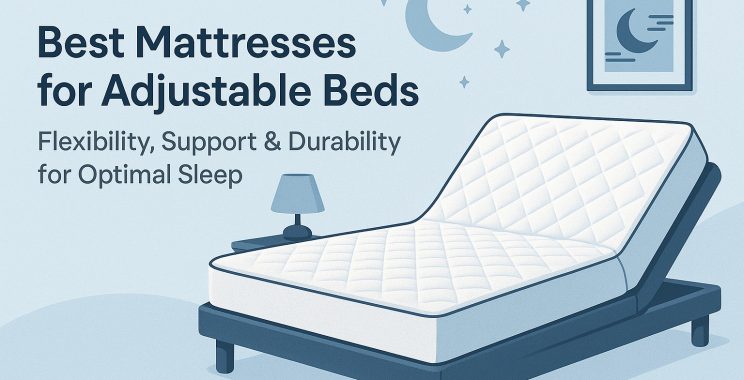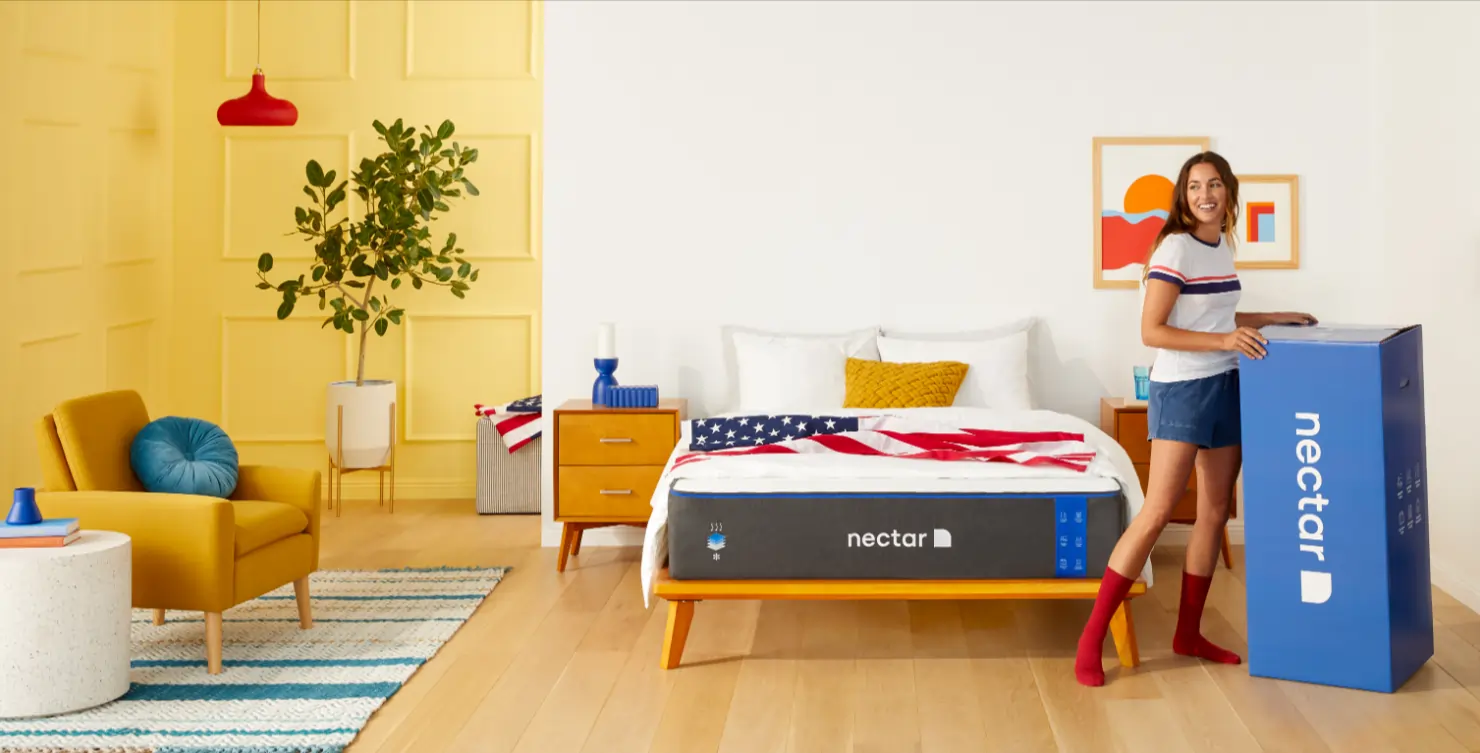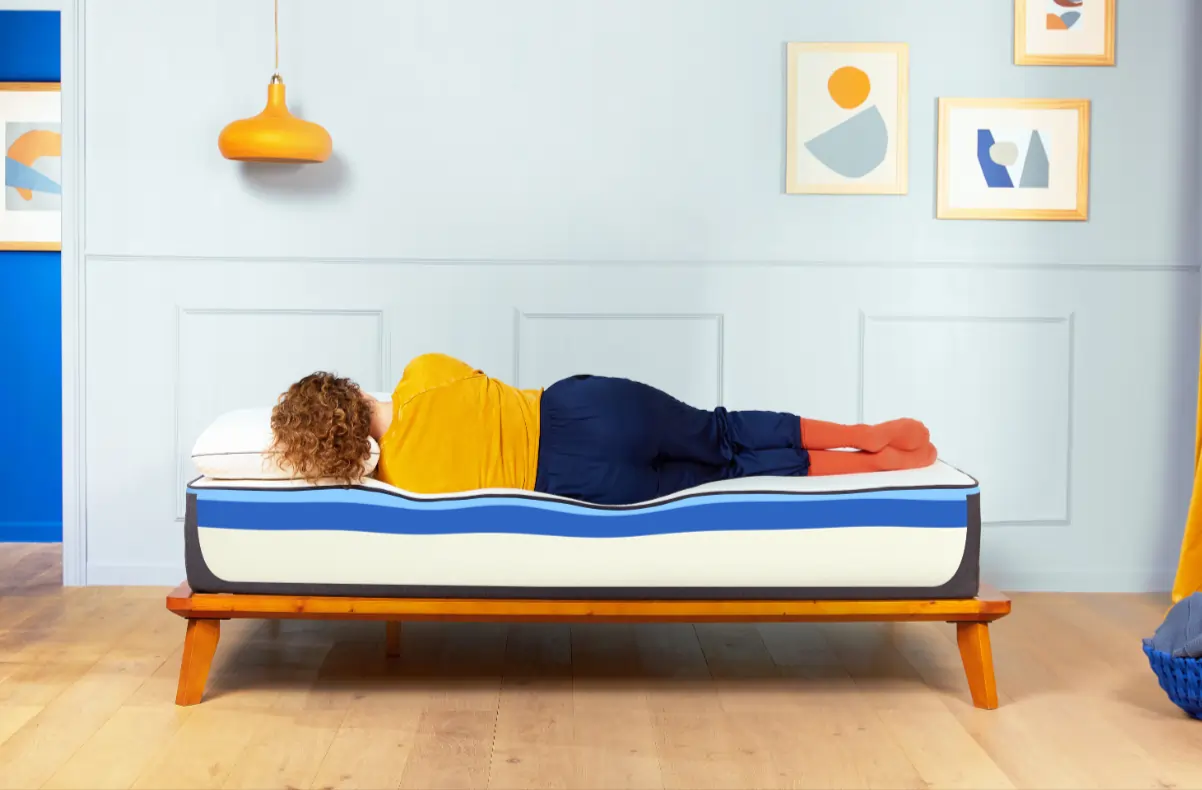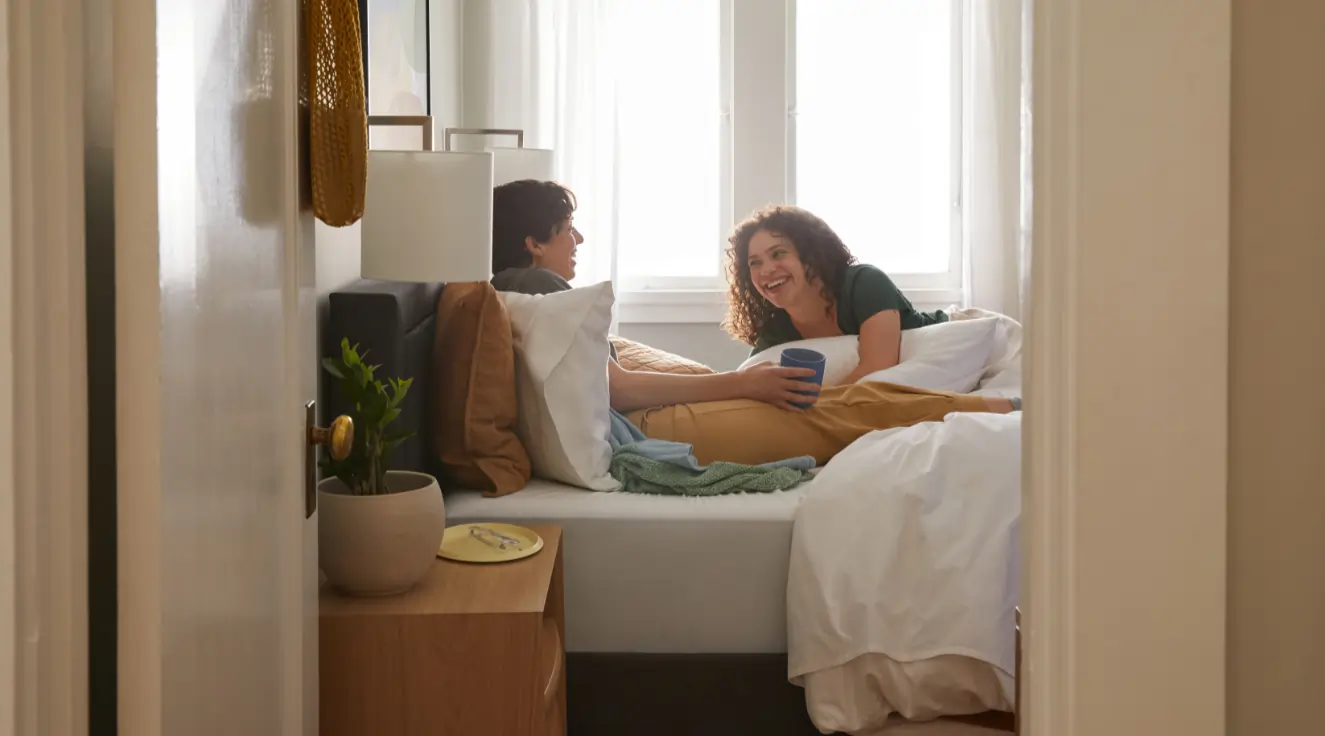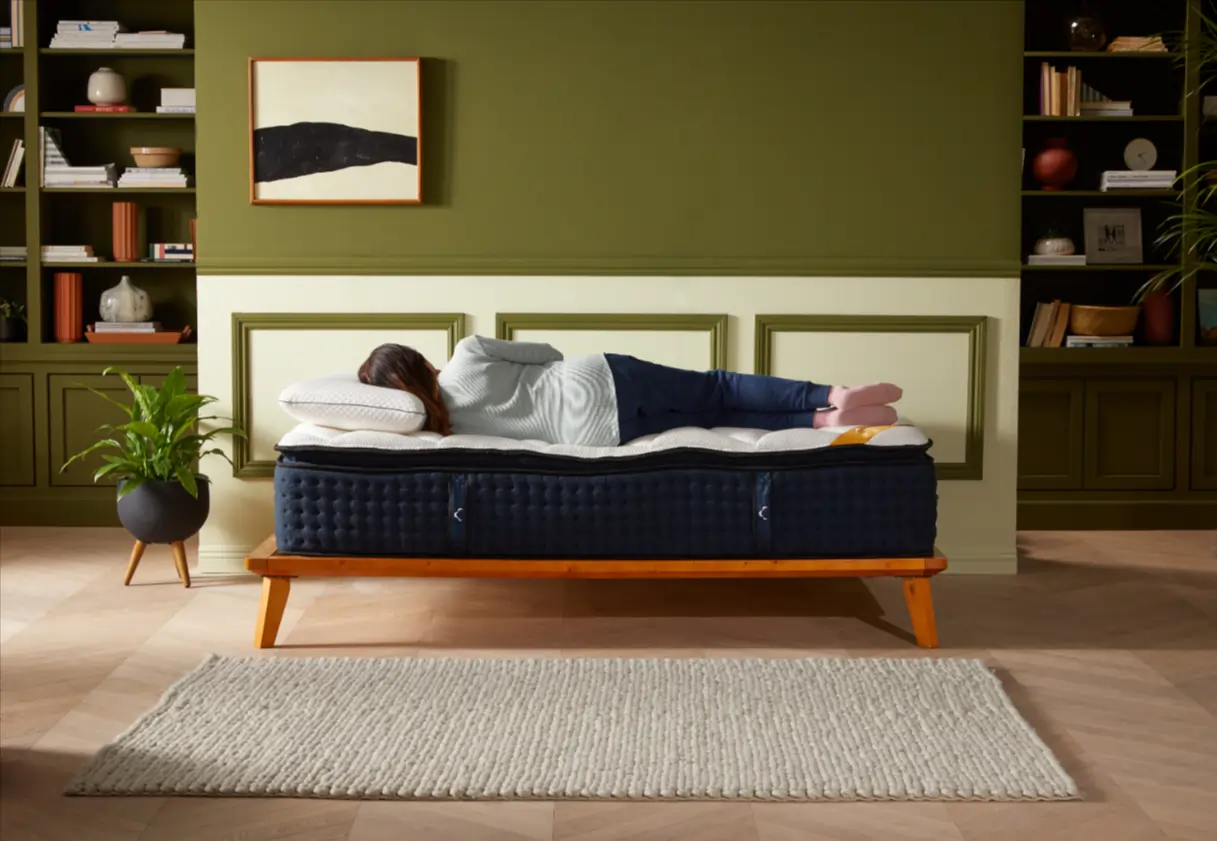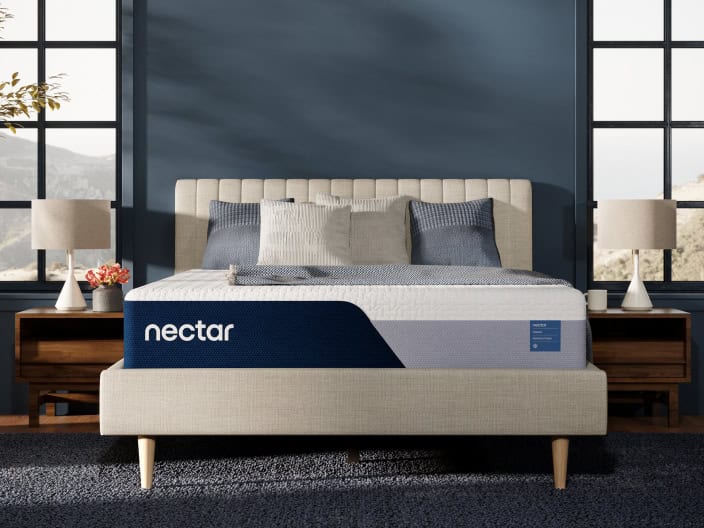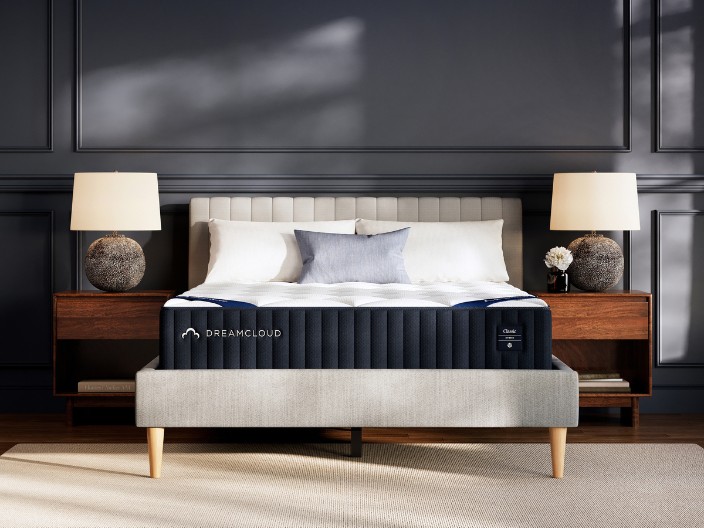Best Mattresses for Adjustable Beds: Flexibility, Support & Durability for Optimal Sleep
Share
Fact checked
Reviewed by experts
Updated
October 23, 2025
Quick read
7 mins to read
List of Content
Best Mattress for Adjustable Beds: A Research-Backed Guide to Optimizing Sleep Health
Adjustable beds have become increasingly popular for their ability to customize sleeping positions, but choosing the best mattress to pair with them is crucial for maximizing comfort and sleep quality. The best mattress for adjustable beds should offer flexibility, support, and durability to accommodate frequent position changes without compromising its effectiveness. This article will explore key factors in choosing mattresses for adjustable bases, explaining how mattress construction and materials might influence performance. Incorporating recent sleep science research and mattress technology insights, we’ll provide evidence-based guidance that empowers you to make an informed decision.
Why Mattress Compatibility with Adjustable Beds Matters for Sleep Health
Adjustable beds allow sleepers to elevate their head, feet, or both, improving circulation and alleviating conditions such as acid reflux, sleep apnea, and lower back pain. However, not all mattresses respond well to these movement patterns. Rigid or overly thick mattresses could hinder the bed’s adjustability, leading to uneven support or rapid wear.
Choosing a mattress that’s suitable for adjustable bases is essential because it needs to bend consistently with the frame without degrading comfort or structural integrity. Research suggests that poor mattress support can exacerbate musculoskeletal pain and impair sleep quality by failing to maintain proper spinal alignment during position changes [Study: Journal of Clinical Sleep Medicine, 2022]. Furthermore, a mattress that does not conform well to inclined sleeping positions may increase pressure points or cause discomfort that will disrupt your sleep continuity.
Key Considerations When Selecting a Mattress for Adjustable Beds
Flexibility of Mattress Materials
A primary consideration when looking for a mattress for your adjustable bed is its ability to flex smoothly while maintaining support. Mattresses with materials that are too rigid, such as traditional innerspring units with continuous coils, tend to resist bending and can become damaged over time when forced to do so. In contrast, mattresses constructed with flexible foam layers, individually wrapped coils, or natural latex provide more adaptability.
Memory foam and latex are particularly known for their responsiveness and pliability. Memory foam softens with heat and pressure, allowing it to contour closely to body shape and adjust as the bed moves. Latex, especially natural Dunlop latex often used in organic mattresses (like Awara Sleep), offers resilient yet flexible support with durable bounce that responds quickly to shifts in positioning. Hybrid mattresses that combine pocketed coils with flexible foams can also perform well, especially if the coil system uses individually wrapped coils that move independently, supporting the mattress’s contouring ability and durability.
Thickness and Weight Considerations
Mattress thickness can also impact how well it conforms to an adjustable base mechanism. While thicker mattresses often enhance pressure relief and durability, excessive thickness can reduce the base’s range of motion or cause tipping near the foot or head of the bed. Generally, mattresses between 10 and 14 inches maintain an effective balance between comfort layers and adjustability. Heavier mattresses can strain the adjustable base motors, affecting long-term performance and potentially causing noise or mechanical issues.
Therefore, a suitable mattress should weigh enough to stay stable but not so much that it impedes the frame’s ability to shift positions reliably. Foam and hybrid mattresses often strike this balance effectively, while traditional thick innerspring or pillow-top mattresses could be less compatible.
Durability and Edge Support
Adjustable beds’ frequent and varied movements place unique stresses on mattress construction. Durability is an important factor, as mattress materials that compress or break down easily will show wear with the bed’s mechanical function. High-density foams and natural latex are widely recognized for longer lifespan under these dynamic conditions.
Edge support matters particularly for adjustable beds, as part of the mattress perimeter may bend more sharply in certain positions. Hybrid mattresses with reinforced edge coils or foam encasements often provide more consistent edge stability, reducing sagging or dips that can disrupt sleep and affect spinal posture over time.
How Different Mattress Types Perform on Adjustable Beds
Memory Foam Mattresses and Adjustable Bases
Memory foam mattresses are among the most compatible with adjustable beds. Their viscoelastic nature allows them to contour in response to pressure and heat, facilitating smooth bending as the base adjusts positions. Cooling fibers can also mitigate the heat retention commonly associated with traditional memory foam, supporting thermal comfort in elevated or reclined sleep positions.
For example, mattresses like those utilizing layers of gel memory foam and responsive foam provide both pressure relief and adaptive support that easily conforms with your bed frame’s elevation changes. Studies have linked the pressure relief offered by memory foam to reduced nocturnal movement and improved sleep continuity, which can be particularly beneficial when sleeping in non-flat positions [Study: National Sleep Foundation, 2023].
Our pick: Nectar Luxe Memory Foam Mattress
Hybrid Mattresses for Adjustable Bed Compatibility
Hybrids combine foam comfort layers with an innerspring coil system, often with individually pocketed coils that work independently of one another. This allows hybrids to offer a blend of contouring and responsive push-back while maintaining breathability and structural resilience. The pocketed coils contribute to edge support and reduce motion transfer, which is especially helpful for couples sharing an adjustable bed.
Luxury hybrid constructions, such as those featuring high-quality individually wrapped coils with pressure-relieving foams and cooling technologies, illustrate these benefits well. Foam layers accommodate bending movements of the frame, while the coil system maintains spinal alignment and reduces excessive sinkage. This dual-action approach addresses support, pressure relief, and durability in adjustable bed settings.
Our pick: DreamCloud Premier Hybrid Mattress
Latex and Organic Mattresses for Flexible Support
Latex mattresses, particularly those made from certified organic Dunlop latex, offer a highly responsive yet durable sleep surface. Latex’s inherent elasticity allows it to bend repeatedly without losing resilience, making it ideal for adjustable beds. In addition, organic materials often provide hypoallergenic benefits and improved airflow due to their open-cell structure and natural fiber covers, which can enhance comfort in elevated positions.
Natural latex mattresses that include certified organic cotton or wool covers also regulate temperature effectively and avoid synthetic chemical treatments. These features produce an eco-friendly sleep environment without sacrificing the adaptability required for adjustable frames.
Our pick: Awara Natural Luxury Hybrid Mattress
All-Foam Budget Mattresses with Adjustable Bases
Budget-conscious sleepers often consider all-foam mattresses constructed with CertiPUR-US certified foams, demonstrating both safety and quality standards. Memory foams and support foams incorporated into these mattresses address concerns typical among adjustable bed users, such as pressure point relief and airflow enhancement.
While these mattresses tend to weigh less and allow for easy bending, durability over long-term use depends heavily on the density of the foam layers. Medium-firm all-foam mattresses can deliver stable support that maintains proper spinal alignment during elevation changes, though lifespan and edge support may be more limited when compared to hybrid or latex models.
Our pick: Siena 12″ Signature Memory Foam Mattress
Additional Mattress Features to Support Adjustable Bed Use
Pressure Relief and Spinal Alignment
Proper spinal alignment is critical for restorative sleep, especially for those who suffer from chronic pain. Adjusting mattress firmness and responsiveness to different sleeping positions helps maintain the natural curve of the spine. Medium-firm mattresses often strike the optimal balance between support and cushioning, as demonstrated by clinical trials where participants with lower back pain reported improved symptoms on this firmness level [Study: Journal of Orthopaedic & Sports Physical Therapy, 2024].
Memory foam and hybrid mattresses that use zoned support foams address these needs by targeting different regions of the body, such as enhanced lumbar support and softer cushioning at the shoulders and hips. This zoning helps preserve spinal alignment during sleep positions facilitated by adjustable beds.
Cooling and Breathability in Inclined Sleep Positions
Temperature regulation can be affected by both mattress construction and sleeping position. Inclined positions can reduce heat dissipation due to reduced airflow around the body. Mattresses with breathable coil layers, gel-infused foams, or natural materials like organic wool provide improved moisture-wicking and air circulation.
Cooling top covers integrated with antimicrobial treatments, such as those used in some memory foam mattresses, serve to maintain hygiene and body temperature, which is particularly valuable for sleepers who tend to thermoregulate poorly in elevated positions.
Motion Isolation and Partner Disturbance
Because adjustable beds are often used by couples with different sleep preferences or health needs, motion isolation becomes a relevant factor. Memory foam inherently absorbs movement, minimizing partner disturbance when one person adjusts their side of the bed.
Hybrid mattresses that incorporate individually wrapped coils also perform well in reducing motion transfer by allowing each coil to move independently. This combination lessens wake-ups caused by any sleep or position adjustments throughout the night.
Case Examples of Mattress Technologies Suitable for Adjustable Beds
To illustrate these concepts, consider the DreamCloud hybrid mattress, which combines memory foam layers with individually wrapped coils to provide flexible support, pressure relief, and cooling features. Such hybrid designs deliver the responsiveness needed for adjustable bed frames while maintaining edge support and durability.
Memory foam mattresses like those from Nectar incorporate cooling fibers, memory foams, and supportive foams to optimize comfort and adaptability. Their multi-layer construction allows the mattress to bend easily and distribute pressure evenly, aligning well with adjustable bases.
Natural latex mattresses such as those produced by Awara feature organic dunlop latex paired with breathable, organic cotton and wool. Their resilient elasticity and high-quality certifiable materials offer a sustainable option that flexes well with adjustable frames while promoting hypoallergenic and temperature-regulating qualities.
For consumers on a budget, all-foam mattresses with CertiPUR-US certification, like those in Siena’s line, demonstrate that safe, flexible, and comfortable sleep surfaces are attainable at accessible price points. Incorporating gel memory foam and careful layering, these mattresses achieve the necessary bendability and support for adjustable beds, although longevity may be shorter relative to higher-end hybrid or latex constructions.
Key Takeaways on Selecting the Best Mattress for Adjustable Beds
- A mattress for adjustable beds must be flexible and capable of bending without damaging internal structures; foams, pocketed coils, and latex are preferable materials.
- Mattress thickness typically between 10 and 14 inches balances comfort layers and adjustability without hindering the base’s mechanical range.
- Durability and edge support are critical due to the dynamic stresses of adjustable beds; high-density foams, natural latex, and individually wrapped coils enhance longevity.
- Medium-firm mattresses with zoned support layers maintain spinal alignment and pressure relief across various sleep positions enabled by adjustable bases.
- Cooling properties, such as gel-infused foams or breathable natural materials, help regulate temperature during inclined sleep.
- Motion isolation through memory foam or hybrid coil systems reduces partner disturbances in split-adjustable bed setups.
Conclusion: Ensuring Optimal Sleep with Adjustable Bed Mattresses
Choosing a mattress that is compatible with an adjustable bed requires careful consideration of material flexibility, support, durability, and comfort features tailored to positional sleep. Scientific studies underscore the importance of spinal alignment, pressure relief, and thermal regulation, especially for individuals using adjustable beds to address health concerns. Mattresses constructed with memory foam, hybrid coil systems, or natural latex are well-suited to adapt to adjustable bed frames, offering the responsiveness and durability necessary for long-term use. Incorporating these factors into mattress selection will help you maintain healthy sleep patterns, mitigate pain symptoms, and enhance your overall sleep quality.
This website does not offer medical advice nor professional medical services; rather, it is provided solely for educational, informational, and/or entertainment purposes. Individuals seeking medical advice should consult a licensed physician. The information provided should not be used for diagnosis or treatment of any condition, disease, or injury. When you have a medical condition, you should always talk to licensed doctor or other certified medical professional. You should never delay seeking professional medical advice or treatment based on the contents of this website. Call 911 or immediately go to the nearest emergency room if you think you may have a medical emergency. The contents of this website are provided “as-is”, Sleep Authority and its parent, subsidiaries, affiliates, employees, contributors disclaim any warranty of the information contained herein. Please contact using contact form to report any errors, omissions, misinformation, or abuse.
